Top Alternatives to the Apple Pencil for Creative Users
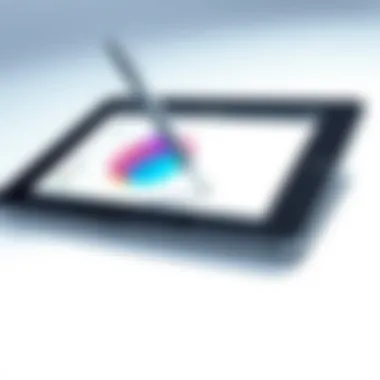
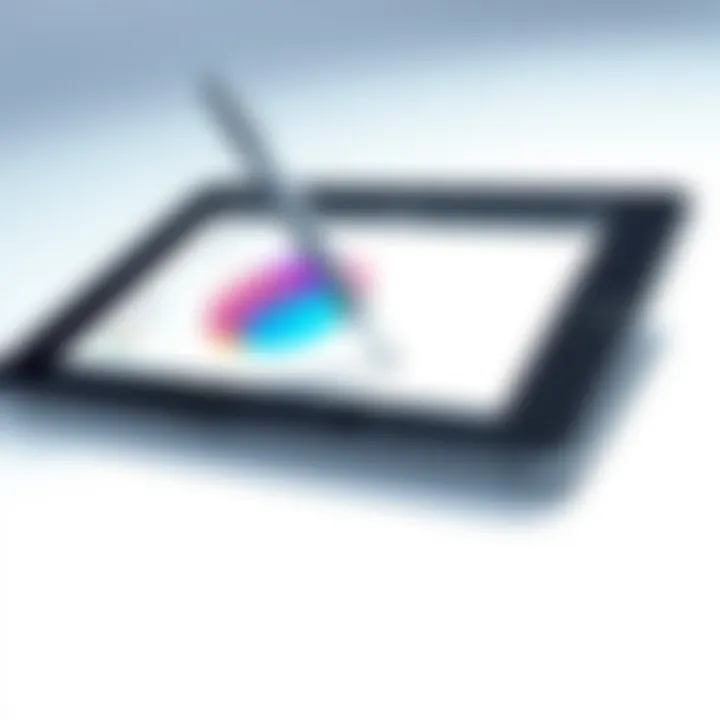
Intro
In a world where creativity meets technology, the tools we choose to express ourselves can determine how well our ideas come to life. The Apple Pencil has been a popular companion for many artists, designers, and note-takers. However, its advantages don’t necessarily mean it's the only viable option on the market. With a growing selection of styluses out there, users might find that alternatives boast features that better fit their unique requirements.
With this article, we will delve into a variety of stylus options that not only rival the Apple Pencil’s capabilities but also offer some distinctive traits. Different users have different priorities—some might seek enhanced precision, while others could be after compatibility with a range of devices. So, let’s take a closer look at options that provide innovative solutions without tying you down to the Apple ecosystem.
Throughout the sections of this article, we will explore the following key points:
- An overview of standout products and their features
- Insights on performance and user experience from hands-on evaluations
- A close examination of the design and build quality of these styluses
- An overview of the innovative technologies would you find among these alternatives
- A look at pricing and the overall value proposition to help you make an informed decision
Now let’s get started! In the next section, we will provide a comprehensive product overview of some exceptional styluses that deserve your attention.
Intro
In today’s tech-driven world, the stylus has emerged as a pivotal tool for those engaging in digital artistry, note-taking, and other creative endeavors. They come in various forms, with Apple’s offering, the Apple Pencil, being the most recognized. Yet, focusing solely on one brand might keep users from discovering alternatives that could better suit their specific needs. This article seeks to shed light on effective alternatives to the Apple Pencil, exploring options that can cater to a wider range of preferences and expectations.
When considering the alternatives, one must ponder several factors. First and foremost is compatibility with various devices. A stylus may excel in design and functionality, but if it doesn't pair well with your device, it's as good as a paperweight. Additionally, pressure sensitivity plays a crucial role for artists seeking fluid strokes and nuanced lines.
The ergonomics of a stylus cannot be overlooked either. Using a tool that feels comfortable in one's hand can significantly enhance the creative process. Lastly, price is a consideration that cannot be ignored in today's economy. With numerous options on the market, it is possible to find high-quality alternatives that don't break the bank.
In the following sections, we will delve deeper into the specifics of the Apple Pencil, the alternatives available, and ultimately guide readers to make informed choices that align with their individual needs. Whether you’re a digital artist, a student, or simply someone who enjoys the convenience of digital note-taking, this exploration aims to provide clarity in what can sometimes feel like an overwhelming market.
"The best tool is the one that perfectly fits your workload and style."
Thus, join us as we uncover various styluses that might just prove to be the missing piece in your digital toolkit.
Understanding the Apple Pencil
In a world buzzing with creative expression and digital innovation, the Apple Pencil stands tall as an emblem of precision in the realm of styluses. For many, it is not just a tool but an extension of imagination, appealing to artists, note-takers, and designers alike. Understanding the nuances of the Apple Pencil goes a long way in making informed comparisons with its alternatives.
The Apple Pencil's design seamlessly blends elegance with functionality, boasting features that allow for high responsiveness and great accuracy. However, the importance of diving into its elements highlights not just what the pencil is, but also what users might crave or miss. By analyzing its design, feedback from users, and its limitations, we can draw a map to alternatives that might better serve different needs.
Design and Functionality
The sleek curvature of the Apple Pencil makes it visually appealing, while its minimalist aesthetic complements the devices it pairs with. The active tip—pressure-sensitive and responsive—enables users to render strokes dynamically. This design supports varied applications, from casual doodling to intricate drawings.
However, it’s not just about looks. The pencil integrates seamlessly with applications, offering features such as palm rejection, which allows users to rest their hands on the screen while writing or sketching without accidental marks.
"The Apple Pencil acts like a paintbrush for the digital canvas—versatile yet purposeful."
User Experience and Feedback
User experiences with the Apple Pencil paint a vivid picture. Many users rave about the fluidity it brings to their creative workflows. For students, jotting down notes or sketching illustrations feels natural and intuitive. Feedback often emphasizes comfort during prolonged use, a significant hedge against discomfort in longer sessions.
On forums like Reddit, conversations illustrate varied usage scenarios, with professional illustrators often lauding its capabilities, while casual users may find the investment steep for lighter use.
Limitations of the Apple Pencil
Despite its shining features, some users have flagged notable limitations. For instance, the Apple Pencil is exclusive to certain Apple devices, tethering those who wish to migrate or explore cross-compatibility. Inflexibility is a real concern for those looking to integrate their stylus into various ecosystems.
Moreover, the high price point can be a showstopper. While it is lauded for quality, the cost often leads potential buyers to explore more budget-friendly alternatives. Aside from that, the rechargeable aspect may not appeal to everyone, as some users prefer a replaceable battery that ensures no downtime.
Navigating these strengths and weaknesses stands crucial. By assessing the Apple Pencil, users gain insights into what they might truly prioritize in a stylus—whether it be design, functionality, or price.
Criteria for Selecting a Stylus


When diving into the world of styluses, especially as effective alternatives to the Apple Pencil, it’s crucial to navigate through specific criteria to ensure you find the right fit for your needs. The selections you make could either enhance or impede your creative experience. Hence, understanding these criteria is not just relevant but essential for anyone looking to maximize their device's potential.
Compatibility with Devices
A stylus is only as good as the devices it can interact with. Here are a few points to consider:
- Device Synchronization: Make sure the stylus is compatible with your tablet or smartphone ecosystem. For instance, if you own an iPad, some styluses may not work seamlessly with it.
- Operating System: Different devices run various operating systems. Always check if the stylus is compatible with iOS or Android.
- App Functionality: Certain apps are designed to utilize the full capabilities of a stylus, meaning compatibility with these apps should also be considered.
Missing out on a great stylus simply because it doesn’t support your device is a real bummer. Be sure to double-check before you buy!
Pressure Sensitivity and Precision
The magic of drawing and writing lies in precision and how well your stylus can capture pressure changes. These elements can significantly impact your creative output. Consider the following:
- Levels of Pressure Sensitivity: Styluses range from 1024 to 8192 levels of pressure sensitivity. More levels generally mean the stylus can capture finer details and broader strokes.
- Tracking Accuracy: Look for styluses that offer real-time tracking with minimal lag, giving you a more natural writing or drawing feel.
- Tip Quality: The tip of the stylus should provide a good balance between firmness and flexibility. This can greatly affect precision.
Ergonomics and Comfort
Your experience with a stylus isn't only about how it performs but how it feels in your hands during prolonged use. Here are aspects to weigh in:
- Grip Design: A comfortable grip can make all the difference, especially during long drawing or writing sessions. Styluses with ergonomic designs can help reduce fatigue.
- Weight: The weight of the stylus should feel balanced - not so heavy that it’s cumbersome, and not so light that it feels flimsy. Finding that sweet spot is crucial.
- Tip Size and shape: Consider how the tip size affects your comfort while working. Different tasks may require different shapes.
Price Considerations
Unquestionably, price is a factor in any purchase decision. While you don’t need to break the bank, there are a couple of things to think about:
- Value vs. Cost: It’s not about finding the cheapest stylus but rather the one that offers the best value for its features.
- Warranty and Support: Sometimes spending a bit more means better customer support or a warranty. These factors could save you money in the long run if something goes awry.
- Long-Term Investment: Think about how frequently you will use the stylus. An initial high price might be justified if it stands the test of time.
In summary, when selecting a stylus as an alternative to the Apple Pencil, it’s beneficial to weigh these criteria carefully. Compatibility ensures usage, pressure sensitivity and precision enhance your artistic capabilities, while ergonomics keep you comfortable during long usage, and price considerations balance your budget against quality. Equipped with this understanding, you’re better prepared to navigate the options available in the market and make a more informed choice.
Top Alternatives to the Apple Pencil
In today's digital landscape, styluses have become indispensable tools for many, especially for creatives and professionals who rely on precision and versatility. While the Apple Pencil is often considered the gold standard in this realm, numerous alternatives offer unique features and benefits that may suit individual needs better or simply provide a more wallet-friendly option.
Choosing the right stylus can significantly enhance a user’s experience, especially when it comes to digital art, note-taking, or general navigation on tablets and smartphones. Key criteria for selecting a stylus often include compatibility with various devices, the level of pressure sensitivity, ergonomic design, and of course, price. Exploring these alternatives allows users to break free from the confines of the Apple ecosystem while still enjoying enhanced functionality and performance.
Adonit Note+
The Adonit Note+ is a robust competitor in the stylus market, especially known for its sleek design and practical functionality. It has the distinct advantage of compatibility with a vast array of devices, including both iOS and Android platforms. One noteworthy feature of the Adonit Note+ is its pressure sensitivity which offers 2048 levels of sensitivity, allowing for a fluid drawing experience akin to that of traditional tools.
This stylus also boasts shortcut buttons that can be customized for tasks such as erasing or changing brush settings, making it adaptable for creators, whether they’re sketching or taking notes.
- Battery Life: Up to 12 hours on a single charge
- Smart Features: Palm rejection and tilt functionality
In a nutshell, the Adonit Note+ can be a perfect match for users looking for versatility and reliability in their stylus, plus it won’t break the bank.
Logitech Crayon
Logitech has crafted the Crayon specifically for those who favor simplicity and ease of use. One of its standout features is the instantaneous connection to iPads, which removes the need for pairing. The Logitech Crayon lights up with one touch, and its battery lasts for up to 7 hours of continuous use, making it an excellent choice for long sessions.
The design is robust yet lightweight, tailored for comfort during extended use. Although it doesn’t feature pressure sensitivity, it compensates by providing a smooth experience that works wonders for note-taking and casual sketching.
- Compatibility: Works seamlessly with all iPads supporting Apple Pencil
- Durability: Drop-resistant due to its solid construction
- Price Point: Very competitively priced compared to high-end styluses
Overall, the Logitech Crayon serves as a practical tool for teachers, students, and anyone in-between who desires a straightforward yet effective writing and drawing experience.
Bamboo Fineline
Wacom’s Bamboo Fineline stylus is often associated with professionals in the graphic and artistic fields. It is designed for longer sessions, boasting a comfortable grip that minimizes fatigue. The Bamboo Fineline features a fine point tip that enhances precision, making it particularly useful for detailed sketches or intricate designs.
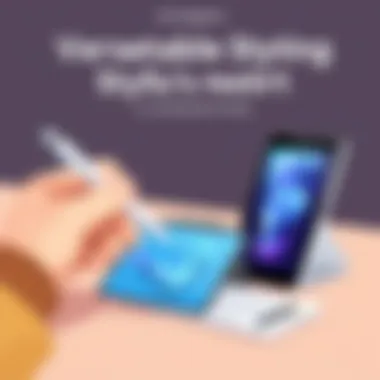
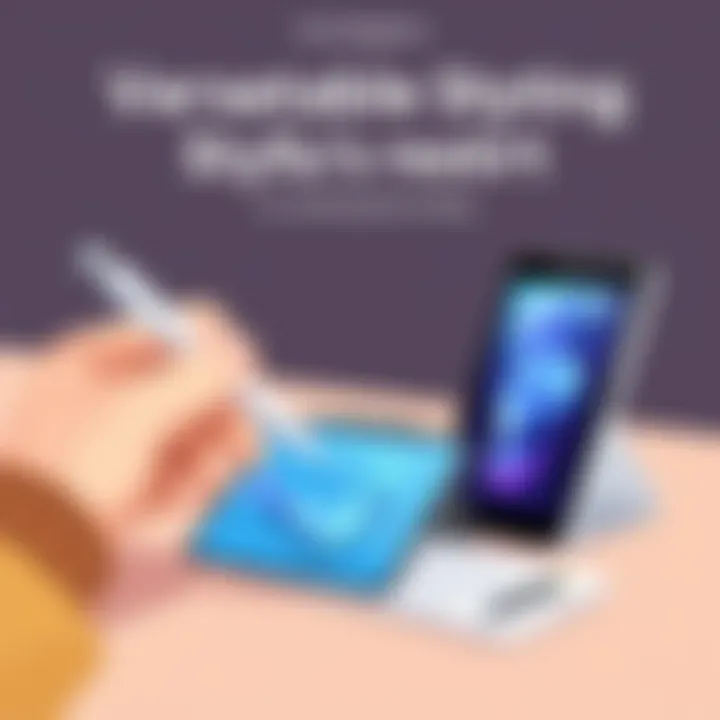
Moreover, it supports palm rejection, which allows users to rest their hand on the screen while writing or drawing without interfering with the digital medium.
- Battery Life: About 15 hours of usage on a full charge
- Customization: It often supports user-defined shortcuts through the Wacom Inkspace app
For those serious about their artwork and looking for a stylus that marries functionality with comfort, the Bamboo Fineline is worth considering.
Zagg Pro Stylus
The Zagg Pro Stylus has carved out a niche for itself among note-takers and artists alike. This stylus is designed to be compatible with a variety of touchscreen devices and offers both a fine point and a broad tip, catering to different styles of writing and drawing. Its compatibility with both iOS and Android devices makes it an appealing option for users with multi-device environments.
One of the Zagg Pro's highlights is its ability to switch between the two tips with a simple twist, making it versatile for both quick notes and creative applications.
- Features: Supports tilt for shading on compatible apps
- Battery: Up to 9 hours with a quick charge
In summary, the Zagg Pro Stylus stands out for users seeking versatility and ease of use combined with robust performance across a range of applications.
Microsoft Surface Pen
The Microsoft Surface Pen is engineered primarily for Windows devices, presenting an impressive tool for both digital artists and professionals. Known for its exceptional responsiveness, it offers a remarkable 4096 levels of pressure sensitivity, enabling fine-tuned control that's hard to match.
The Surface Pen supports tilt functionality, allowing users to shade and draw more organically, closely mimicking the feel of traditional drawing tools. It's renowned for its seamless integration with various Windows applications, making it a favorite among those entrenched in the Microsoft ecosystem.
- Design: Features a sleek, lightweight design with customizable buttons
- Battery Life: Lasts about a year with standard use
For users desiring a sophisticated drawing experience on their Windows devices, the Microsoft Surface Pen is a going-to option.
Samsung S Pen
The Samsung S Pen continues to impress as a premium stylus designed specifically for Samsung devices, primarily their Galaxy Note tablets and smartphones. Its ergonomic design allows for comfortable usage, and it offers advanced features such as Bluetooth connectivity, enabling users to control their device remotely for presentations or media playback.
With an impressive pressure sensitivity range, it allows creative tasks to flow with ease. The S Pen’s ability to convert handwritten notes into text is another coveted feature for productivity-focused users.
- Battery: Charges quickly within the phone, delivering generous amounts of standby time
- Use Cases: Ideal for designers, business professionals, or anyone who engages in multi-tasking
In essence, the Samsung S Pen is a high-quality option highly recommended for users who delve deep into the Samsung ecosystem and crave a stylus that capitalizes on the unique functionalities of their devices.
Feature Comparisons of Selected Styluses
When it comes to selecting a stylus that will serve as a viable alternative to the Apple Pencil, understanding the various features of each option is fundamental. In a world where precision is key, not all styluses are created equal. Feature comparisons provide a roadmap of what you can expect from each device. This leads to informed decisions, ensuring you find a stylus that fits your particular needs, whether you’re sketching, note-taking, or navigating your tablet.
Design and Build Quality
The design of a stylus can significantly impact how it feels in your hand. Factors like weight, grip, and length all come into play. A well-built stylus offers ergonomic benefits, providing comfort during extended use. For instance, the Bamboo Fineline—a favorite among digital artists—has a unique triangular shape which not only enhances grip but also offers a premium feel.
- Craftsmanship matters. Look for materials that provide durability. You wouldn’t want your stylus falling apart after a few months of use.
- Consider the weight; a heavier stylus might give a premium feel, but it can also lead to fatigue over prolonged usage. Balancing lightness and sturdiness is crucial.
Ultimately, a good design should not just be about aesthetics but also functionality. A grippy rubberized section can help if you plan to use it during long drawing sessions. In the crowded market today, keeping an eye on build quality is non-negotiable.
Performance and Responsiveness
Here's where the rubber meets the road: the performance of a stylus can vary widely from one to another. In general, performance refers to the responsiveness of the stylus as it interacts with your device. Latency—the lag between writing and seeing the mark appear on-screen—can make or break your experience.
For example, the Logitech Crayon stands out for its extremely low latency. Users report a near-instant response, allowing for smooth and seamless writing or drawing experiences. Moreover, pressure sensitivity is another key area to look into. The Adonit Note+ boasts 2048 levels of pressure sensitivity, mimicking the natural feel of traditional drawing tools.
- If you prioritize drawing, look for features like palm rejection, which prevents your hand from interfering while you draw.
- Compatibility with various apps can sometimes be a sticking point. Make sure your chosen stylus can integrate well with design apps for optimal performance.
In the end, performance should align with your intended use, whether for casual jotting or detailed illustrations. The response time and sensitivity directly influences usability, making these factors critical when comparing styluses.
Versatility of Use
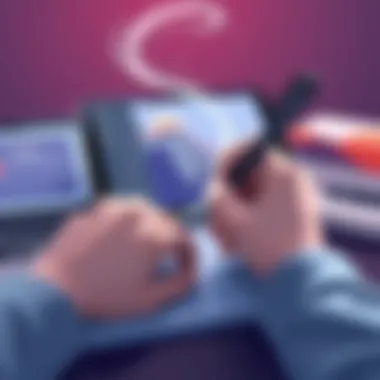
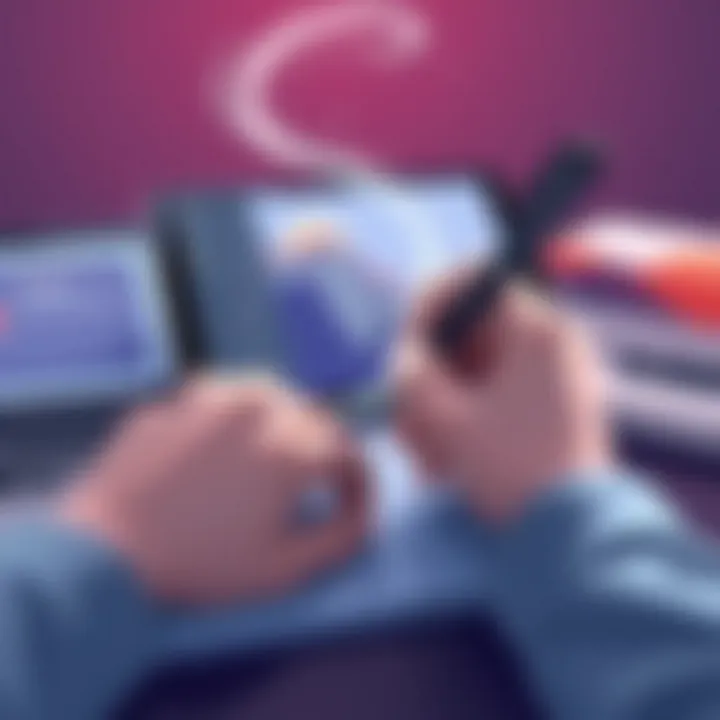
Versatility in a stylus isn’t just about compatibility; it extends to how you can utilize the device beyond simply writing or drawing. Some styluses come with additional features that cater to various needs. For example, the Zagg Pro Stylus can be used not only with tablets but also offers a stylus tip on one end and a capacitive tip on the other. This means you can seamlessly scroll through your device, flip to writing, and back again—without the hassle of switching tools.
Moreover, a stylus that works across multiple platforms can be a game changer. The Microsoft Surface Pen, for instance, is not just for Surface devices; it’s engineered to support Windows Ink technology on other compatible devices as well.
- Consider your workflow: If you frequently switch between note-taking and artistic work, a stylus that adapts to different tasks may be the better fit.
- Determine if additional functions like erasers or customizable buttons suit your workflow, as they could save time.
When selecting a stylus, evaluating its versatility helps ensure it can be a one-stop-shop for all your creative tasks, which can save money and counteract the clutter of too many devices.
User Reviews and Experiences
User reviews and experiences are essential when it comes to selecting a stylus. While technical specifications can offer insights into product capabilities, nothing beats the real-world application reported by actual users. This section serves as a vital resource, unearthing the nuances that may not be captured in a product description. Understanding how various styluses have been embraced—or rejected—by both creative professionals and everyday users can guide prospective buyers toward a choice that fits their needs and expectations.
Collecting a variety of user testimonials allows for a well-rounded perspective on products. Users often outline not just the pros, but also the nuances of their experiences, such as compatibility issues, comfort during lengthy use, or the subtleties of performance under different conditions. This can help others anticipate any hiccups they might face and decide if they can live with them.
Insights from Creative Professionals
Creative professionals like illustrators and designers utilize styluses not just for doodles, but for intricate work that can make or break a project. Their insights often revolve around the tools’ responsiveness and pressure sensitivity. For example, many report that the Logitech Crayon provides less flexibility in pressure sensitivity compared to the Adonit Note+. Such feedback suggests that while the Crayon is stable for basic tasks, it might fall short for projects requiring fine detail.
Furthermore, professionals often comment on the pen's ergonomics. A frequent remark is how comfortable a stylus feels during long drawing sessions. Styluses such as the Bamboo Fineline often get praise for their grip and weight distribution. This feedback is crucial: nothing can ruin a creative flow faster than discomfort.
Another common trend among professional users’ reviews is the versatility of a stylus. The Microsoft Surface Pen, for instance, is frequently lauded for its dual functionality. Users appreciate its ability to seamlessly switch between writing notes and sketching designs, catering to various creative needs. However, some highlight that after prolonged intensive use, the ink accuracy drops off, reflecting real-world limitations of even the best options.
Feedback from Casual Users
Casual users, on the other hand, tend to place emphasis on the value-for-money aspect. A popular sentiment among recent Samsung S Pen users is that while it works effectively for everyday tasks like note-taking, it doesn’t quite meet the needs of those doing more demanding work, such as graphic design. Users have pointed out that while the stylus is priced reasonably, it doesn't always deliver the precision needed for more artistic endeavors.
The general consensus among casual users revolves around the balance between functionality and price. Many mention that the Zagg Pro Stylus provides decent performance for its cost. They often appreciate features such as palm rejection technology, which allows for a natural writing experience, without the flaws of lower-end options. However, they also often compare it unfavorably to the Apple Pencil, which might be the gold standard in their view.
Some users express concern regarding compatibility. Many casual users are more likely to switch devices, and knowing whether a stylus will work across multiple platforms can greatly influence their purchasing decisions. This is where user feedback shines, usually shedding light on such compatibility headaches and helping others avoid future pitfalls.
Overall, the insights from both creative professionals and casual users culminate in a rich tapestry of experiences that prospective stylus buyers can leverage. By acknowledging both the praises and the pitfalls highlighted by these users, individuals can make a well-informed choice that aligns with their specific preferences and needs.
Ending: Making the Right Choice
When it comes to selecting the right stylus, the decision isn't one to be made lightly, especially in a world buzzing with tech options. As we've examined throughout this article, choosing an effective alternative to the Apple Pencil involves considering several critical factors—compatibility, pressure sensitivity, ergonomics, and price. Each of these plays a vital role in how well a stylus will serve your unique needs.
The Bigger Picture
Understanding your requirements is paramount. Are you of the artistic type needing precision for fine lines and shading, or are you more about note-taking and navigation? There’s a stylus out there crafted just for you, and knowing your use case can narrow down the options significantly.
Technical Aspects Matter
Among these alternatives, you might find features that stand out. For instance, consider something like the Logitech Crayon, which shines in compatibility if you're using an iPad. Its robust performance can be a game changer for educators and students alike. On the safety net, the Adonit Note+ offers a budget-friendly option without skimping on quality. Just think about your favorite device and how well various styluses pair with it.
"In a world of choices, the right one will align with your needs and budget."
Balancing Quality and Price
It’s easy to get lured into the bells and whistles of high-end models, but remember that price isn’t everything. Just because a stylus comes with advanced features doesn’t mean it'll be the best fit for you. Sometimes, simplicity can efficiently meet your needs without making your wallet weep. Always balance quality with what you’re willing to invest.
The User Perspective
Lastly, don’t underestimate the power of human experience. User reviews can give you real insight that numbers and stats can’t—live feedback on performance, comfort during long sessions, and overall satisfaction can inform your choice immensely. Reading through opinions on Reddit or platforms like Amazon can be very enlightening.
Future Trends in Stylus Technology
As technology continuously evolves, so do the tools we use in our daily lives. Stylus technology is no exception. With a new wave of digital creativity sweeping across industries, the demand for advanced and versatile styluses is on the rise. Understanding the future trends in this area is crucial not only for consumers but also for manufacturers aiming to meet the ever-changing needs of users. The upcoming innovations focus on enhancing user experience, improving precision, and introducing novel functionalities that set the stage for a new generation of styluses.
Advancements in Precision and Functionality
The precision and functionality of styluses have come a long way since their inception. With advancements in sensor technology, we are seeing styluses that can detect a wider range of pressure sensitivity and tilt angles. This means that artists and designers can express subtle variations in their work with a finesse that was previously unattainable.
Consider the example of how artists traditionally used brushes. Just as different brushes offer varying styles of stroke, the stylus now mimics the experience of using a real pen or pencil. Such progression opens the door to features like programmable buttons, which allow users to customize their workflow, ensuring efficiency in tasks ranging from digital illustration to note-taking. The integration of tilt sensors provides greater control for shading and the creation of dynamic, layered artworks.
"The future of stylus technology is not just about replication but enhancement—bringing a tactile richness to digital creativity that draws inspiration from traditional tools."
Moreover, as smart devices continue to integrate artificial intelligence, we might soon see stylus technology coupled with smart algorithms that predict user movements, improving response times and accuracy. For instance, if you're an avid note-taker, imagine a stylus that anticipates your writing pace and adjusts for lag almost intuitively. This capability could vastly enhance the writing experience, allowing for seamless transitions from one idea to the next without the usual interruptions of lagging devices.
Tracking precision also stands to benefit from improved connectivity standards like Bluetooth 5.0 or the upcoming Bluetooth 5.2. These innovations can contribute to lower latency and improved data transfer speeds. As a result, the gap between hand movements and output on the screen will diminish, creating an almost miraculous harmony between user intention and device response.
At the same time, with sustainability becoming a cornerstone of modern technology, future styluses are likely to focus on eco-friendly materials and energy-efficient designs. Users might see styluses made from recycled components that not only function optimally but also minimize environmental impact.
As manufacturers enhance capabilities across the board, usability will also take center stage. Entwickler will likely introduce styluses that cater to different niches—from educational environments fostering creativity in children to precision tools suited for professionals in graphic design and architecture. The goal will be to ensure that regardless of a user’s expertise or primary use case, there exists an option that meets their needs effectively.
Ultimately, the future of stylus technology is positioned as a blend of enhanced performance and user-centric design. Embracing these trends will be essential for those looking to navigate the multifaceted landscape of digital creativity, making it possible to choose the right tool for specific tasks. As we look ahead, keeping an eye on these developments will be key for users and creators alike.



